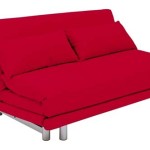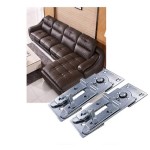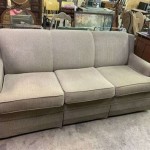Parts of a Sofa Diagram to Label
Understanding the various components of a sofa can be beneficial for several reasons, from furniture shopping and interior design to repairs and maintenance. A labeled diagram provides a visual guide to these components, facilitating clear communication and a deeper understanding of sofa construction.
Key External Components
The external parts of a sofa are the most visible and contribute significantly to its overall aesthetic and functionality. These include:
- Arms: Located on either side of the seating area, arms provide support and comfort.
- Back: The upright portion of the sofa that supports the back while seated.
- Seat Cushions: The padded sections designed for sitting, often removable for cleaning or replacement.
- Back Cushions: Placed against the back of the sofa, these cushions provide lumbar support and comfort.
- Legs/Base: The structural supports that elevate the sofa off the floor, contributing to its style and stability.
- Skirt/Apron: A decorative fabric panel that conceals the sofa's legs and frame.
- Welt/Piping: A decorative cord or fabric trim used along the seams of cushions or the frame for a tailored look.
Key Internal Components
While not immediately visible, the internal components are crucial for the sofa's structure, comfort, and longevity. These include:
- Frame: The underlying skeletal structure typically made of wood, metal, or engineered wood.
- Springs: Coil springs, sinuous springs, or webbing systems provide support and resilience to the seating area.
- Padding/Batting: Layers of cushioning material, such as foam, fiberfill, or down, placed over the springs for added comfort.
- Webbing: Interwoven straps, often made of jute or elastic, that support the cushions and provide a springy base.
- Dust Cover: A protective layer of fabric placed over the frame and springs to prevent dust and debris from accumulating.
Understanding Frame Construction
The sofa frame is the foundation upon which all other components are built. Different frame materials and construction methods impact durability and quality. Consider these aspects:
- Hardwood Frames: Constructed from durable woods like oak, maple, or ash, these frames are known for their strength and longevity.
- Softwood Frames: Made from less expensive woods like pine or fir, these frames are lighter but may not be as durable.
- Metal Frames: Often used in contemporary designs, metal frames are sturdy and can support heavier loads.
- Engineered Wood Frames: Made from composite wood materials, these frames offer a cost-effective alternative but may be less resistant to moisture and wear.
- Corner Blocks: Reinforcements used at the joints of the frame to add strength and stability.
- Dowels/Screws: Used to secure the frame components together, impacting the overall structural integrity.
Understanding Suspension Systems
The suspension system is essential for providing comfortable seating and ensuring the sofa retains its shape over time. Key elements include:
- Coil Springs: Individual interconnected coils offer a traditional and supportive seating experience.
- Sinuous Springs (No-Sag Springs): S-shaped wires stretched across the frame provide a firm and resilient base.
- Webbing: Interwoven straps, often made of jute or elastic, offer a more economical suspension system.
- Eight-Way Hand-Tied Springs: A premium suspension system where each spring is individually hand-tied to the frame for exceptional comfort and durability.
Understanding Cushioning Materials
Cushion filling significantly impacts the sofa's comfort and feel. Common cushioning materials include:
- Foam: A versatile and widely used cushioning material that comes in various densities and firmness levels.
- Fiberfill: A synthetic material used to wrap foam cores or as a standalone fill, adding softness and plushness.
- Down/Feather Blend: A luxurious and comfortable filling that provides a soft and sink-in feel.
- Polyester Fiber: A cost-effective alternative to down, offering a softer feel than standard foam.
Labeling a Sofa Diagram
When labeling a sofa diagram, clarity and accuracy are paramount. Use labels that clearly identify each component, and consider using arrows or color-coding to differentiate between internal and external parts. A well-labeled diagram can be an invaluable tool for understanding and communicating about sofa construction.
Using Sofa Diagrams for Practical Applications
A labeled sofa diagram can be useful in several practical situations:
- Furniture Shopping: Understanding the different components and their impact on quality and comfort can help inform purchasing decisions.
- Interior Design: Visualizing the various parts of a sofa assists in planning furniture placement and coordinating styles.
- Repairs and Maintenance: A diagram can facilitate communication with repair professionals and aid in troubleshooting issues.
- DIY Projects: Understanding sofa construction is crucial for upholstery projects or modifications.

Ilrated Diagrams Of The Parts A Couch 2024 Guide Furniture Details Design Luxury Sofa Drawing

Pet Friendly Upholstery Fabric

Diagram Of A Sideboard Interior Design Voary Refinishing Furniture Styles

Diagram Of A Wardrobe Interior Design Renderings Antique Furniture Styles

Parts Of A Chair Prop Agenda

Want To Avoid Toxic Couch Chemicals Just Look For New Label

Sofa Size Guide How To Measure For A Timeless Chesterfields Blog

Home Sweet Label The Kitchen Activity Teacher Made

Pin On Age

Furniture In The House Drawing Activity Teacher Made








